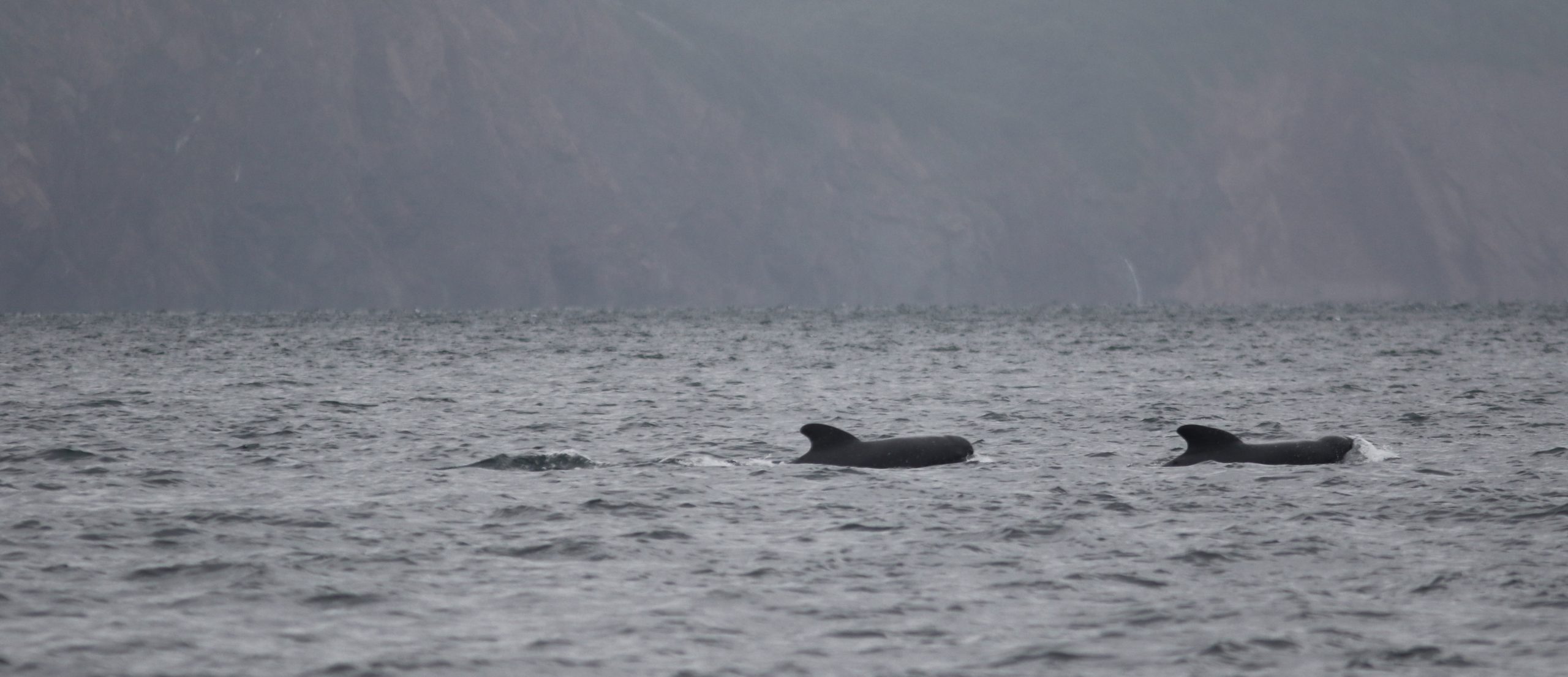
The tourism industry of Pleasant Bay, N.S. depends on guided whale-watching expeditions. However, over the past two decades, tour companies reported that the area’s flagship species, the long-finned pilot whale, has been appearing less frequently and moving farther from shore.
Researchers from the Institute for the Oceans and Fisheries (IOF) and Dalhousie University partnered with whale-watching companies in Pleasant Bay to collect data on the whereabouts and behaviours of this social, matrilineal whale species known for mass stranding events.
Their findings not only confirmed whale-watch operators’ suspicions, but also provided insights for keeping whales in the area.
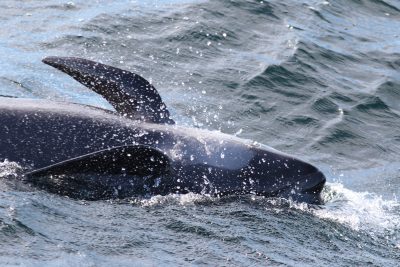 It is also one of the first studies to show that whale-watch data can give researchers a focused picture of where whales spend their time. The reliability of this data was a question mark because whale-watching boats don’t survey entire marine areas – instead, they go where the whales are.
It is also one of the first studies to show that whale-watch data can give researchers a focused picture of where whales spend their time. The reliability of this data was a question mark because whale-watching boats don’t survey entire marine areas – instead, they go where the whales are.
“The methods that we use in this study can be applied to other researchers who are searching for an inexpensive way to get out on the water and can’t pay for their own, solely research-dedicated boat,” said Sarah McComb-Turbitt, the study’s lead author and a graduate of the IOF’s master’s program
To create an accurate map of how the whales were using the waters of Pleasant Bay, the researchers used GPS to keep track of where whale sightings happened, and, crucially, where they did not see whales.
They noticed some key changes in the whales’ behaviour when they examined the data, which was collected between 2003-2016.
“It’s an interesting story because the whales have moved farther from shore, they have decreased their foraging activity, but they’re still foraging in their very traditional, historic areas at two cove locations,” McComb-Turbitt said. “Local fishermen and local whale-watch operators say that the abundance of pilot whales is changing, and the spatial data that we had been collecting complements this knowledge.”
“The community wants what’s best for the whales. They’re very responsible whale-watchers out there… they’re so proud of the whales.”
Based on their findings, the researchers recommended that whale-watchers keep some distance from the two foraging areas to avoid disturbing the whales while they eat. Studies on other whale species have shown that whales are particularly sensitive to noise and disruption when they forage.
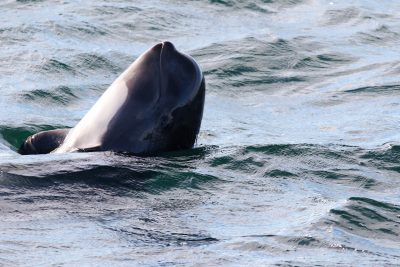 “We didn’t want the message of this paper to be about recommending a marine protected area,” McComb-Turbitt said. “Because pilot whales are abundant, we believe the population is doing well. The reason we were looking into this was to address the concerns of the whale-watching operators about the continued viability of the local pilot whale population and the whale-watch industry.”
“We didn’t want the message of this paper to be about recommending a marine protected area,” McComb-Turbitt said. “Because pilot whales are abundant, we believe the population is doing well. The reason we were looking into this was to address the concerns of the whale-watching operators about the continued viability of the local pilot whale population and the whale-watch industry.”
Partnerships between researchers and whale-watch operators have a long history. McComb-Turbitt said working with the operators gave her the chance to get close to the animals and to attend a few “pilot whale parties” – events in which hundreds of the whales gather to socialize and give lucky spectators an acrobatics show as they leap out of the water.
“The community just wants what’s best for the whales. They’re very responsible whale-watchers out there… they’re so proud of the whales,” McComb-Turbitt said.
Studies in which scientists work alongside community members who have a stake in policy decisions make for more actionable research, according to Dr. Marie Auger‐Méthé, an assistant professor at the IOF and co-author of the study.
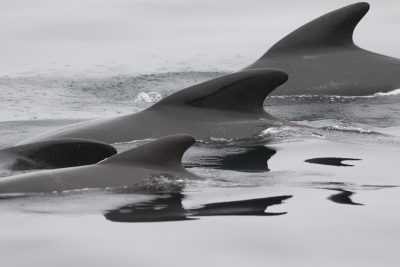 “I think a key takeaway is the power of using data from the whale watch operators, that is collected with them, to help management,” Auger‐Méthé said. “In the end, when a government makes rules, you want people to buy in. If you involve them in all steps of the process, it’s more likely they’re going to be happy with it and have their voice heard and understand the process. I think that’s the key.”
“I think a key takeaway is the power of using data from the whale watch operators, that is collected with them, to help management,” Auger‐Méthé said. “In the end, when a government makes rules, you want people to buy in. If you involve them in all steps of the process, it’s more likely they’re going to be happy with it and have their voice heard and understand the process. I think that’s the key.”
The study “Small‐scale spatial distributions of long‐finned pilot whales change over time, but foraging hot spots are consistent: Significance for marine wildlife tourism management” was published in Marine Mammal Science.
All pilot whale photos: © Sarah McComb-Turbitt
Tags: foraging, IOF students, Marie Auger-Methe, ocean ecology, SERG, statistical ecology, whale-watching, whales
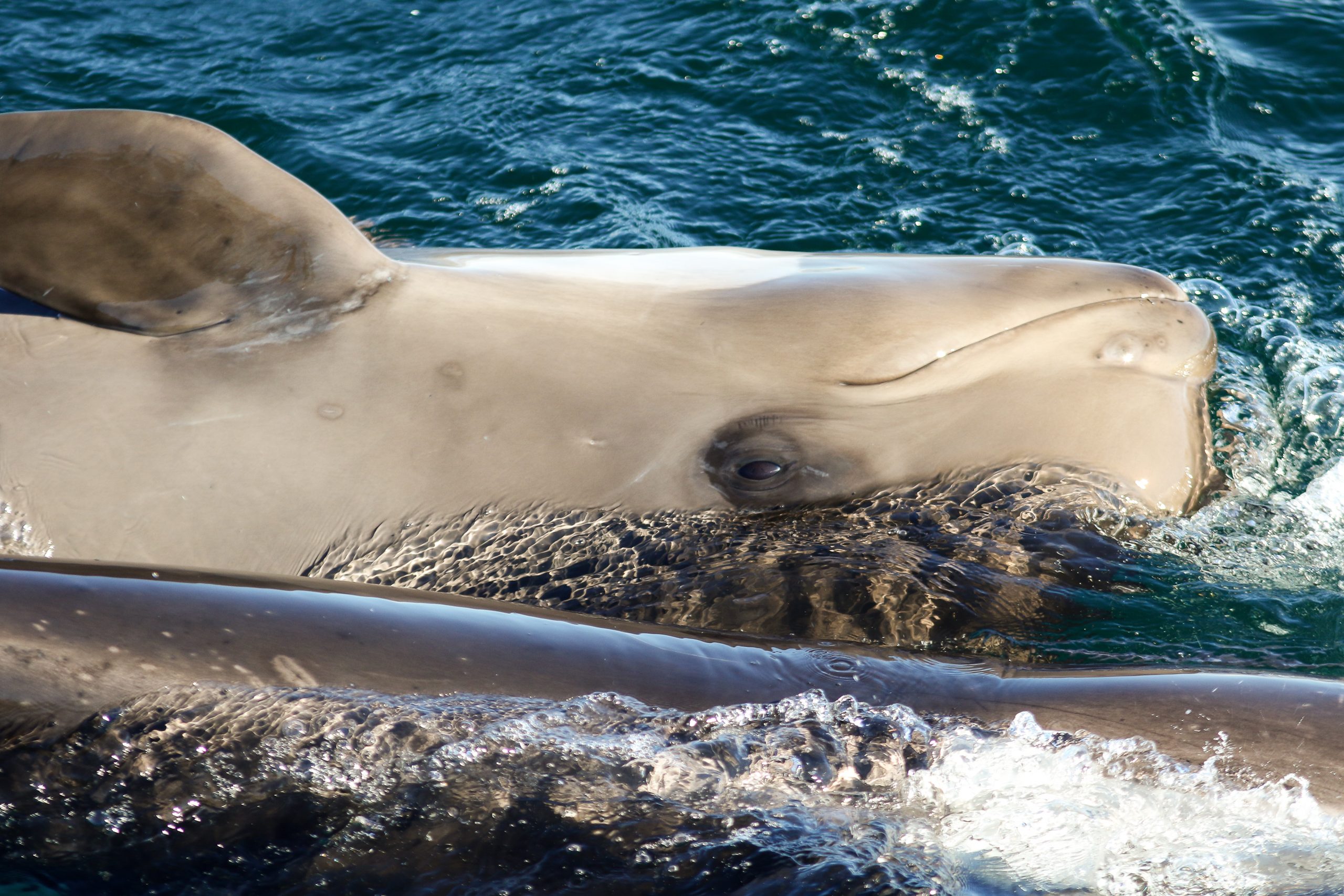
Pilot whale – © Sarah McComb-Turbitt